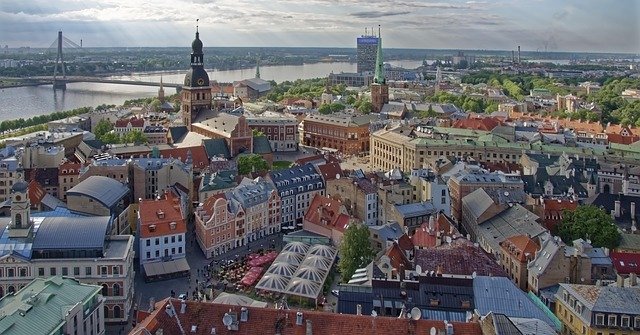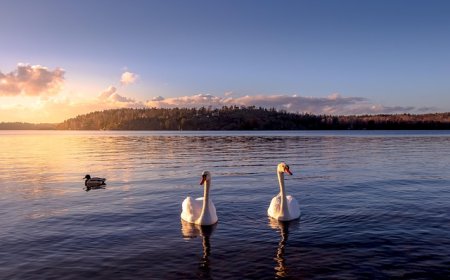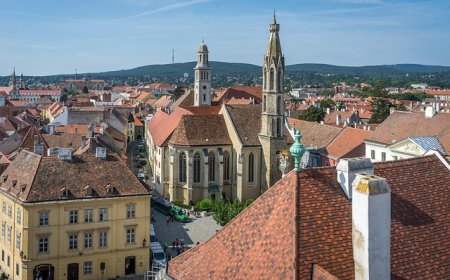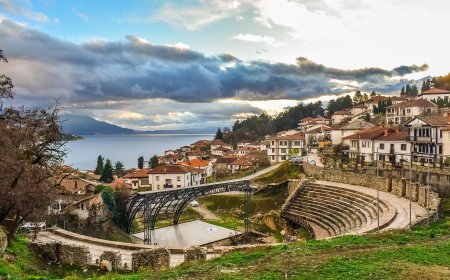Latvia Facts for Kids – Geography, Culture & History of a Baltic Nation
Learn about Latvia for kids. Discover this Baltic nation’s forests, coastlines, Old Town Riga, traditions, and historical role in Northern Europe.

🇱🇻 Latvia: A Baltic Country of Forests, Folk Songs, and Freedom
🗺 Introduction
Latvia is a beautiful country located in Northern Europe, along the coast of the Baltic Sea. It is one of the three Baltic States, along with Lithuania and Estonia. Latvia is known for its dense forests, rich traditions, and love of folk music and freedom.
Throughout history, Latvia has faced invasions and foreign rule, but its people have always held tightly to their language, culture, and independence. Today, Latvia is a peaceful democracy and a proud member of the European Union and NATO.
🌍 Geography and Location
Latvia sits between Estonia to the north and Lithuania to the south. To the east is Russia, and to the southeast is Belarus. Latvia’s western border is its long coastline along the Baltic Sea, filled with sandy beaches and pine forests.
The land is mostly flat or gently rolling, with over 12,000 rivers and 3,000 lakes. Forests cover about half the country, home to animals like deer, lynx, and wolves. Latvia also has peat bogs, meadows, and wetlands.
The country has a temperate climate, with cold winters and mild, rainy summers. Snow is common in winter, while summers are green and full of outdoor festivals.
🏙 Cities and Regions
The capital city is Riga, located at the mouth of the Daugava River on the Baltic coast. Riga is Latvia’s largest city and a cultural hub with museums, universities, and famous architecture. Its Old Town is a UNESCO World Heritage Site, filled with colorful buildings and narrow streets.
Other major cities include:
- Daugavpils – a southern city known for its diverse cultures and art center
- Liepāja – a port city with a music scene and historic military sites
- Jūrmala – a popular beach resort near Riga, famous for wooden houses and spas
- Cēsis – a small town with a medieval castle and scenic trails
Each region in Latvia has its own traditions and folk songs, and local festivals keep those customs alive.
👨👩👧👦 People, Language, and Culture
Latvia has a population of about 1.8 million people. Most are ethnic Latvians, but there are also large groups of Russians, along with Poles, Belarusians, and Ukrainians.
The official language is Latvian, a unique language that belongs to the Baltic language group. Russian is also widely spoken, especially in cities.
Latvian culture is known for its folk music, crafts, poetry, and deep respect for nature. One of the country’s greatest treasures is the Latvian Song and Dance Festival, held every five years with thousands of performers wearing traditional costumes and singing ancient songs. Latvia also celebrates the summer solstice with a holiday called Jāņi, which includes bonfires, songs, and flower crowns.
🍽 Food and Traditions
Latvian cuisine is simple, seasonal, and closely tied to local ingredients. Meals often feature potatoes, pork, mushrooms, berries, dairy, and rye bread. People enjoy homemade soups, meat pies, and fish from the sea and rivers.
Traditional dishes include:
- Grey peas with bacon – a national dish made with dried peas
- Pīrāgi – small baked buns filled with meat, cheese, or mushrooms
- Sklandrausis – a sweet carrot and potato tart
- Cold beet soup – a bright pink soup served with eggs and sour cream in summer
- Rupjmaize – dark rye bread, often served with butter or cheese
Holidays like Lāčplēsis Day (Freedom Fighters Day), Jāņi (midsummer), and Independence Day (November 18) are celebrated with music, bonfires, and family gatherings.
🏛 History of Latvia
Latvia has a long and complex history. In ancient times, Baltic tribes lived in the region. In the Middle Ages, German crusaders took control and built castles and cities. Later, Latvia was ruled by Poland, Sweden, and Russia.
In 1918, Latvia declared independence for the first time. However, during World War II, it was occupied by the Soviet Union, then Nazi Germany, and then again by the Soviet Union. During these times, many Latvians were imprisoned, deported, or forced to fight in wars.
Latvia regained its independence peacefully in 1991, after the fall of the Soviet Union. Since then, it has become a democratic republic and joined international organizations like the European Union (EU) and NATO.
🌿 Nature and Environment
Latvia is one of Europe’s greenest countries. Forests cover nearly 50% of the land, and national parks protect large areas of wild beauty. Popular parks include:
- Gauja National Park – known for its sandstone cliffs, caves, and river valley
- Kemeri National Park – famous for its bogs, birdwatching, and healing springs
Latvians care deeply about nature. Schools teach about environmental protection, and people enjoy hiking, mushroom-picking, canoeing, and celebrating the seasons outdoors.
📚 Vocabulary List
| Word | Definition |
|---|---|
| Baltic States | Latvia, Lithuania, and Estonia—countries along the Baltic Sea |
| Riga | The capital city of Latvia |
| Folk song | A traditional song passed down through generations |
| Pīrāgi | Small buns filled with savory fillings like meat or cheese |
| Jāņi | A Latvian summer solstice celebration with singing and bonfires |
| Rupjmaize | A type of dark rye bread popular in Latvia |
| Gauja National Park | A large nature park known for cliffs, forests, and rivers |
| Independence Day | A holiday that celebrates Latvia becoming a free nation in 1918 |
👧🧒 Kid-Friendly Summary
Latvia is a country near the sea with forests, rivers, and old castles. The capital city is Riga, where you can walk through colorful streets and eat yummy rye bread. People in Latvia speak Latvian and love music and dancing, especially at big festivals where everyone sings together.
Latvians enjoy nature and spend time hiking, picking berries, and celebrating summer with bonfires. They became an independent country in 1991 and now live peacefully while keeping their traditions alive.
🧠 Interactive Quiz: What Do You Know About Latvia?
1. What is the capital of Latvia?
A) Tallinn
B) Vilnius
C) Riga
D) Kaunas
2. What sea borders Latvia?
A) North Sea
B) Adriatic Sea
C) Baltic Sea
D) Mediterranean Sea
3. What language do most Latvians speak?
A) Russian
B) Lithuanian
C) Latvian
D) Estonian
4. What food is a sweet carrot and potato tart?
A) Pīrāgi
B) Sklandrausis
C) Cepelinai
D) Kugelis
5. What is Jāņi?
A) A winter holiday
B) A city
C) A summer solstice festival
D) A type of bread
6. When did Latvia become independent from the Soviet Union?
A) 1985
B) 1990
C) 1991
D) 2000
7. What park is known for sandstone cliffs and a river valley?
A) Aukštaitija
B) Kemeri
C) Gauja National Park
D) Daugavpils Reserve
8. What kind of bread is popular in Latvia?
A) French bread
B) White sandwich bread
C) Rye bread (Rupjmaize)
D) Cornbread




















































